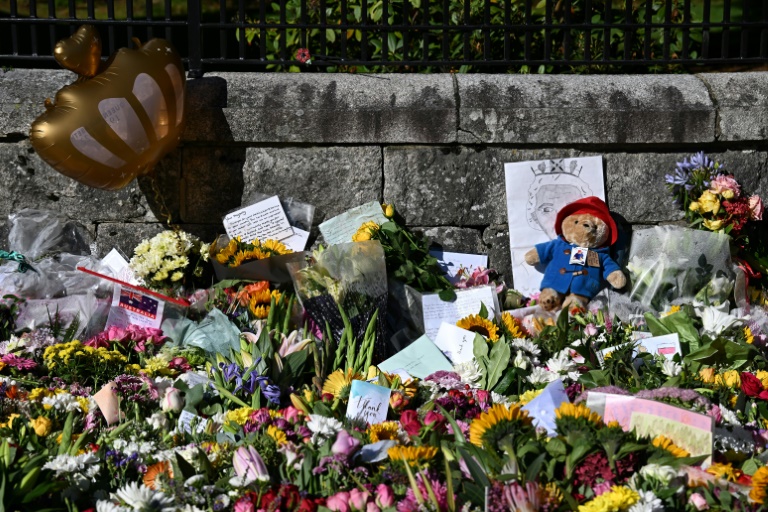Queen Elizabeth II’s coffin on Sunday left the Scottish retreat where she died as the late monarch embarked on her final journey with thousands of her mourning subjects expected to line the route.
A hush fell over the gathered crowd as the cortege carrying the queen’s casket exited the gates of Balmoral Castle for Edinburgh at the start of an odyssey of mourning in the United Kingdom, culminating in her state funeral in London on September 19.
Six groundskeepers had loaded the oak coffin — draped with a Scottish Royal Standard and a floral wreath — into the black hearse that was to wind its way slowly on a six-hour journey to Scotland’s capital.
Security escort vehicles and a mauve Bentley carrying the queen’s only daughter Princess Anne made up the cortege passing through a series of towns before reaching Edinburgh, where it will rest for two days so people can pay tribute.
The first glimpse of her coffin for a grieving nation came a day after her son Charles III was formally proclaimed king, and after her warring grandsons William and Harry, and their wives Kate and Meghan, briefly reunited for a walkabout.
The king himself will travel to Edinburgh on Monday for a prayer service, before the body of the queen, who died at Balmoral on Thursday aged 96, is flown to London on Tuesday.

A nation mourns — floral tributes and a toy Paddington bear outside Balmoral Castle, the Scottish retreat where Queen Elizabeth II died © AFP / Paul ELLIS
Britain’s longest-serving monarch will then lie in state for four days which is expected to draw at least a million people, ahead of a funeral set to be watched worldwide and attended by numerous heads of state.
“It’s the end of an era, it’s quite a big moment for the country and the world,” said Nia Gray-Wannell, a scientist, who brought her two children to Balmoral to pay their respects.
“It felt like it would be worth coming.”
– Show of unity –
While Charles’ accession has pushed Britain into what newspapers have called the new “Carolean” era, Britain and the royal family are still coming to terms with the end of the Elizabethan age.